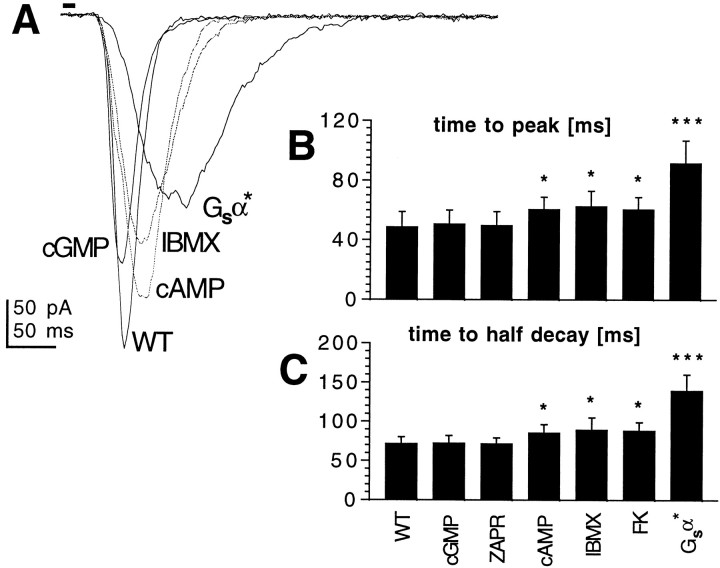Fig. 1.
cAMP, but not cGMP, slows down macroscopic light response in wild-type photoreceptors. A, Responses to 10 msec flashes recorded in WT photoreceptors in controls and in the presence of 8-Br-cGMP (5 mm), 8-Br-cAMP (5 mm), IBMX (100 μm), and photoreceptors from flies expressing activated Gsα (Gsα*). Cyclic nucleotides were applied via the recording pipette, and all other drugs were added to the bath. B, C, Time-to-peak (B) and time-to-half-decay (C) of macroscopic light responses in control WT photoreceptors and in the presence of a cGMP analog (8-Br-cGMP; 5 mm), the specific cGMP-PDE inhibitor zaprinast (100 μm), 8-Br-cAMP (5 mm), IBMX (100 μm), forskolin (FK; 10 μm), and photoreceptors from Gsα* flies. Data are mean ± SD from between 5 and 20 cells. Statistically significant treatments are marked with asterisks (*p < 0.05; ***p < 0.001).

